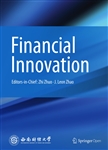The volatility of returns from commodity futures:evidence from India
作者机构:Department of EconomicsThe University of BurdwanBurdwanIndia
出 版 物:《Financial Innovation》 (金融创新(英文))
年 卷 期:2017年第3卷第1期
页 面:189-211页
核心收录:
学科分类:0202[经济学-应用经济学] 02[经济学] 1202[管理学-工商管理] 020206[经济学-国际贸易学]
主 题:Commodity futures Daily return Volatility Samuelson hypothesis GARCH
摘 要:Background:This paper examines the pattern of the volatility of the daily return of select commodity futures in India and explores the extent to which the select commodity futures satisfy the Samuelson ***:One commodity future from each group of futures is chosen for the *** select commodities are potato,gold,crude oil,and mentha *** data are collected from MCX India over the period 2004–*** study uses several econometric techniques for the *** GARCH model is introduced for examining the volatility of commodity *** of the key contributions of the paper is the use of theβterm of the GARCH model to address the Samuelson ***:The Samuelson hypothesis,when tested by daily returns and using standard deviation as a crude measure of volatility,is supported for gold futures only,as per the value ofβ(the GARCH effect).The values of the rolling standard deviation,used as a measure of the trend in the volatility of daily returns,exhibits a decreasing volatility trend for potato futures and an increasing volatility trend for gold futures in all contract *** result of the GARCH(1,1)model suggests the presence of persistent volatility and the prevalence of long memory for the select commodity futures,except potato ***:The study sheds light on significant characteristics of the daily return volatility of the commodity futures under *** results suggest the existence of a developed market for the gold and crude oil futures(with volatility clustering)and show that the maturity effect is only valid for the gold futures.



